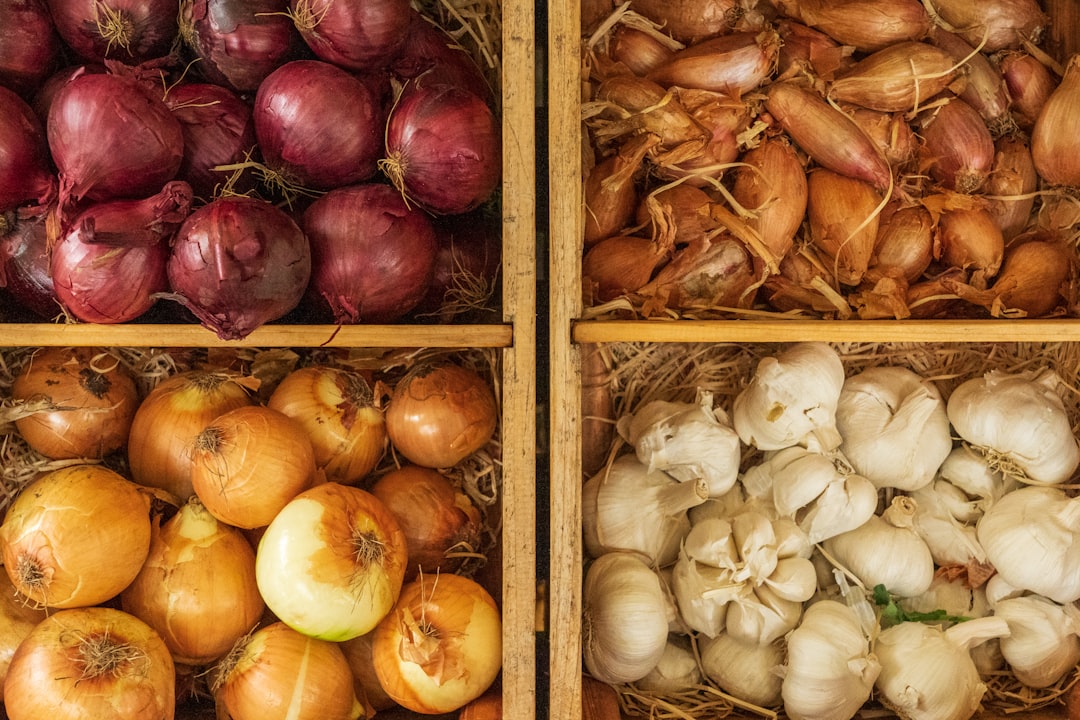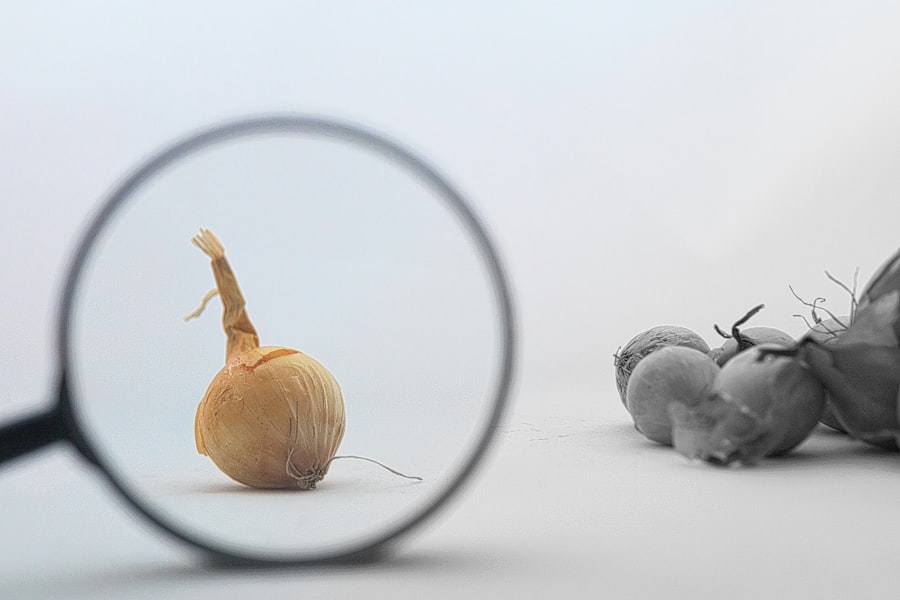Planting Onions: A Step-by-Step Guide

Onions are a staple ingredient in many dishes around the world, adding flavor and depth to a wide variety of recipes. Not only are they delicious, but they are also relatively easy to grow in your own garden. Whether you have a large plot or just a small space, onions can be a rewarding addition to your garden. However, choosing the right onion variety for your garden is crucial for success.
Choosing the Right Onion Variety for Your Garden
When it comes to choosing onion varieties for your garden, there are several factors to consider. First and foremost, you need to think about the climate and growing conditions in your area. Some onion varieties are better suited for cooler climates, while others thrive in warmer regions. It’s important to choose a variety that is well-adapted to your specific climate.
Popular onion varieties for home gardens include the Yellow Sweet Spanish, which is known for its mild flavor and large size. The Red Burgundy onion is another popular choice, with its deep red color and sweet taste. For those looking for a smaller onion, the White Lisbon is a great option. It has a mild flavor and is perfect for salads and garnishes.
Preparing the Soil for Onion Planting
Before planting onions, it’s important to prepare the soil properly. Onions prefer well-drained soil that is rich in organic matter. Start by removing any weeds or grass from the area where you plan to plant your onions. Then, loosen the soil with a garden fork or tiller to a depth of at least 8 inches.
Next, incorporate organic matter into the soil, such as compost or well-rotted manure. This will help improve the soil structure and provide essential nutrients for your onions. Spread a layer of organic matter over the top of the soil and use a garden fork or tiller to mix it in thoroughly.
When to Plant Onions: Timing is Key
| Timing | Onion Variety | Days to Maturity | Planting Depth | Spacing |
|---|---|---|---|---|
| Early Spring | Short-day onions | 90-110 days | 1 inch | 4-6 inches apart |
| Mid-Spring | Intermediate-day onions | 110-130 days | 1-2 inches | 6-8 inches apart |
| Fall | Long-day onions | 130-150 days | 1-2 inches | 6-8 inches apart |
The timing of planting onions is crucial for their success. Onions are typically planted in the spring, as soon as the soil can be worked. However, the exact timing will depend on your location and climate. In general, onions should be planted 4-6 weeks before the last expected frost date in your area.
It’s important to consider the length of your growing season when deciding when to plant onions. Onions require a long growing season, typically around 100-120 days from planting to harvest. If you live in a region with a short growing season, you may need to start your onions indoors or choose varieties that have a shorter maturity time.
How to Plant Onion Sets or Seedlings
There are two main ways to plant onions: using sets or seedlings. Onion sets are small bulbs that have been grown from seed the previous year. They are easy to plant and provide a head start on growth. Seedlings, on the other hand, are young onion plants that have been started from seed and then transplanted into your garden.
To plant onion sets, simply push them into the soil about 1 inch deep and 4-6 inches apart. If you are planting seedlings, dig a small hole in the soil and place the seedling in it, making sure that the roots are covered and the top of the bulb is level with the soil surface. Space seedlings 4-6 inches apart.
Spacing and Depth: Guidelines for Planting Onions

Proper spacing and depth are important when planting onions. Onions need room to grow and develop their bulbs, so it’s important not to overcrowd them. The recommended spacing for onions is 4-6 inches apart in rows that are 12-18 inches apart.
When it comes to planting depth, onions should be planted with the top of the bulb level with the soil surface. If the bulb is planted too deep, it may not develop properly. If it is planted too shallow, it may not have enough support and may become dislodged.
Watering and Fertilizing Onions for Optimal Growth
Watering is essential for the growth and development of onions. Onions have shallow roots, so they require consistent moisture to thrive. Water your onions regularly, providing about 1 inch of water per week. Be careful not to overwater, as this can lead to rot and disease.
Fertilizing onions is also important for optimal growth. Onions are heavy feeders and require a steady supply of nutrients. Before planting, incorporate a balanced fertilizer into the soil. Once the onions are established, side-dress them with nitrogen-rich fertilizer every 3-4 weeks.
Mulching Onions: Benefits and Best Practices
Mulching onions can provide several benefits, including conserving moisture, suppressing weeds, and regulating soil temperature. Apply a layer of organic mulch, such as straw or shredded leaves, around your onion plants. This will help retain moisture in the soil and prevent weed growth.
When mulching onions, be careful not to cover the bulbs completely. Leave a small space around each bulb to allow for air circulation and prevent rot. Mulch should be applied after the soil has warmed up in the spring and removed before harvest in the summer.
Dealing with Common Onion Pests and Diseases
Like any plant, onions are susceptible to pests and diseases. Common pests that affect onions include onion maggots, thrips, and aphids. These pests can cause damage to the leaves and bulbs of your onions.
To prevent pest infestations, practice good garden hygiene by removing any debris or weeds that may harbor pests. You can also use row covers or insecticidal soap to protect your onions from pests.
Common diseases that affect onions include onion rot, downy mildew, and pink root. These diseases can cause stunted growth, yellowing leaves, and rotting bulbs. To prevent disease, make sure to plant onions in well-drained soil and avoid overwatering. Crop rotation can also help prevent the buildup of disease-causing organisms in the soil.
Harvesting Onions: Signs of Maturity and Tips for Success
Knowing when to harvest onions is important for ensuring that they develop their full flavor and storage potential. Onions are ready for harvest when the tops start to yellow and fall over. This usually occurs in late summer or early fall, depending on when they were planted.
To harvest onions, gently lift them out of the soil using a garden fork or trowel. Allow them to dry in a warm, dry location for a few days before storing.
Storing Onions: Keeping Your Harvest Fresh for Months to Come
Proper storage is key to keeping your onion harvest fresh for months to come. After they have dried, remove any loose dirt or debris from the onions. Trim the tops down to about 1 inch above the bulb.
Onions should be stored in a cool, dry location with good air circulation. They can be stored in mesh bags or woven baskets, or hung in braids. Avoid storing onions near potatoes or other fruits and vegetables that produce ethylene gas, as this can cause them to spoil.
Growing onions in your garden can be a rewarding experience. By choosing the right variety, preparing the soil properly, and following proper planting and care techniques, you can enjoy a bountiful harvest of delicious onions. Whether you have a large garden or just a small space, onions are a versatile and easy-to-grow crop that can enhance your cooking and gardening experience. So why not give growing onions a try? You may be surprised at how simple and satisfying it can be.



